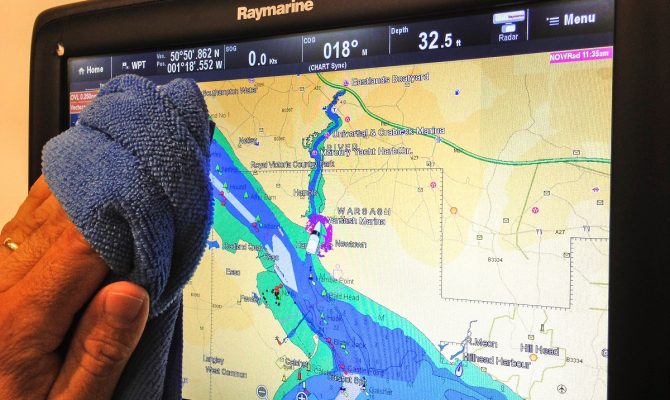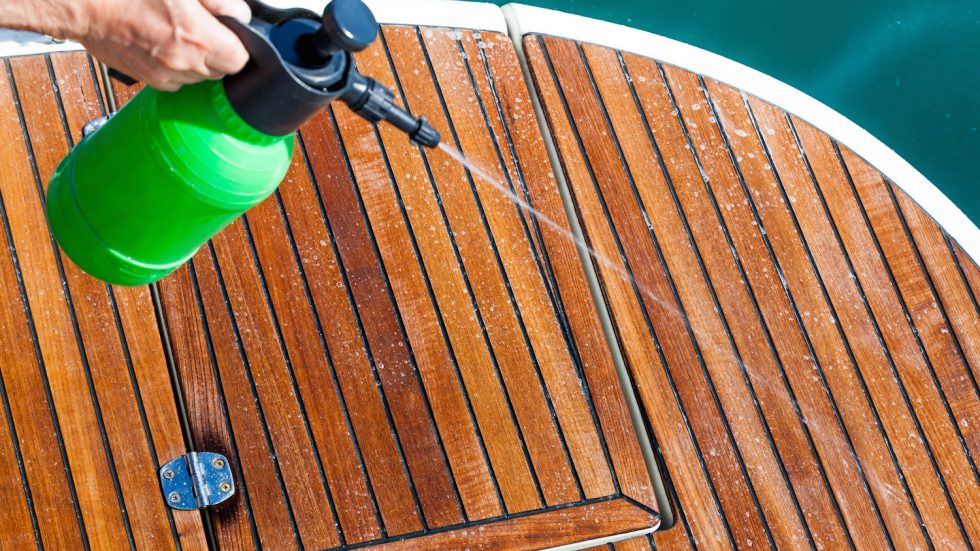James McGowen of Raymarine/FLIR pointed out that the heart of any electronic system is the battery power that drives it, and keeping batteries in top condition will ensure plenty of power when needed. The good news is that making sure battery power is healthy is not complicated. He recommends a periodic check of connections along the power supply, including battery switches and at the battery terminals. Making sure they are tight, clean and free of corrosion will eliminate some of the most common power issues aboard.
If batteries are of the traditional variety, then it’s imperative that water levels be topped of with distilled water. Distilled water can be purchased inexpensively at any grocery store and will be free of other minerals and contaminants found in tap water. It’s important to check charger systems, as relying on alternator charges is often not enough.
Both McGowen and Jacob Scott, Navico’s Lowrance Product Expert, agree that software updates are extremely important in keeping electronics running to optimal performance. He explained that there are several ways to keep your software up-to-date, and by doing so, these updates not only fix any bugs there may be in the system but can add features and performance, along with improving compatibility with existing and future add-ons.
Checking and updating your system has never been easier. McGowen and Scott say that anyone can go to their respective sites and download the latest version of software to an SD or Micro SD card and then perform an update by installing the card in their displays and powering up. If you have one of the latest displays on the market and have wireless capability, updating is even easier. By either being in WiFi range or by using a hotspot, newer displays such as Raymarine units running Lighthouse II and Navico’s new displays, including Lowrance’s HDS Carbon units, can self-check software of all connected components of the same manufacturer connected via NMEA 2000 and automatically update as needed. Scott also points out that their Network Analyzer Service Assistant, or NASA, which determines what software updates are needed, can create a NIF file that can be used to help aid in remote service of their products.
Another simple but effective maintenance tip for keeping electronics in top working condition is taking care of the actual display screens. Many have special coatings that reduce glare and improve the display’s visual performance, so care must be taken in what is used to clean them. McGowen warns not to use anything with ammonia or with abrasives. He recommends plain, fresh water and a microfiber cloth. In fact most of today’s units are sealed and watertight, so a good flushing of the screen can be beneficial, followed by drying off with a microfiber cloth.
Scott admits he uses a homemade solution to clean all his electronic screens as well as other coated optics. He mixes equal parts of rubbing alcohol with water and puts them in a cheap small spray bottle that can be found in the cosmetics section of your local drug store or big box retailer. Combine this solution with a microfiber cloth and you can always have clean and clear screens (as well as sunglasses).
There are other things to check for that can keep things running smoothly. Checking transom-mount transducers for correct alignment, for example, and making sure all transducers are free of growth or contaminants will eliminate related issues. Scott says that if you see the fish arches on your fish finder angled rather than arched horizontally then your transducer may not be aligned correctly.
If in-hull transducers are utilized, make sure their tanks are filled, and if epoxied down, make sure they are secure. Of course, there are other things you could check, including hydraulic lines on autopilots and cracked or warped domes and arrays on radar systems.
It’s easy to forget about your electronics and just power them up each trip, but remember that a little time invested in checking them can provide years of trouble-free service.
Author: Glenn Hayes is a regular contributor to HeartLand Boating magazine




